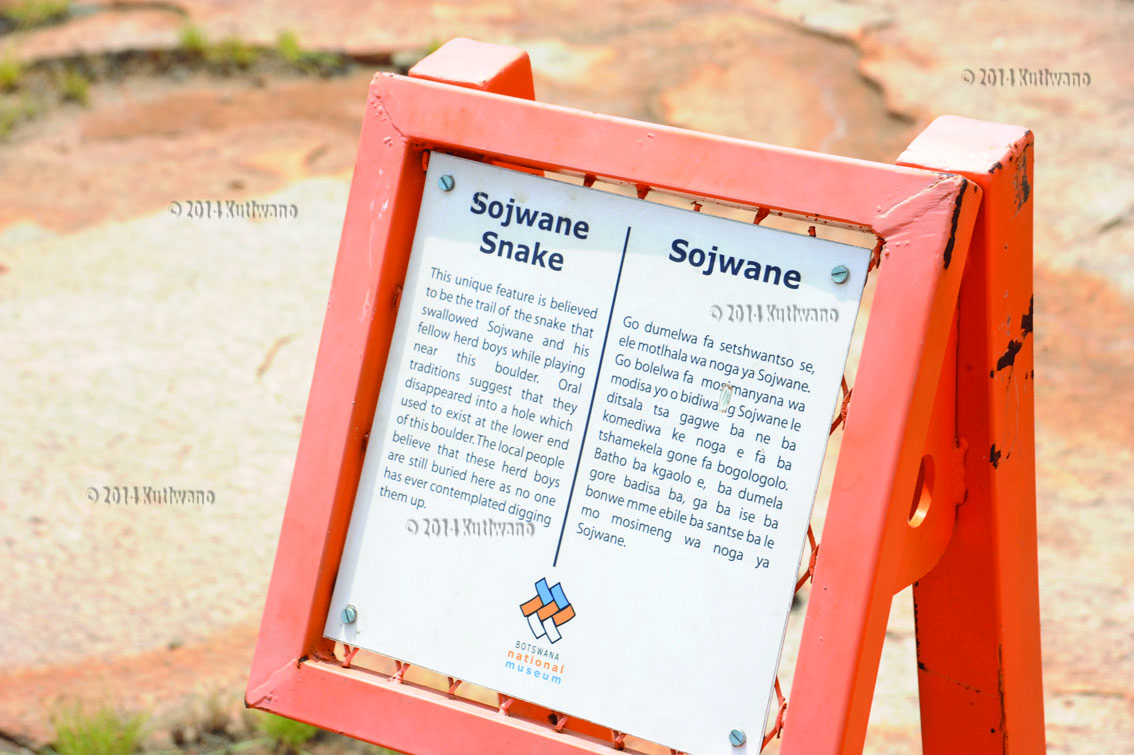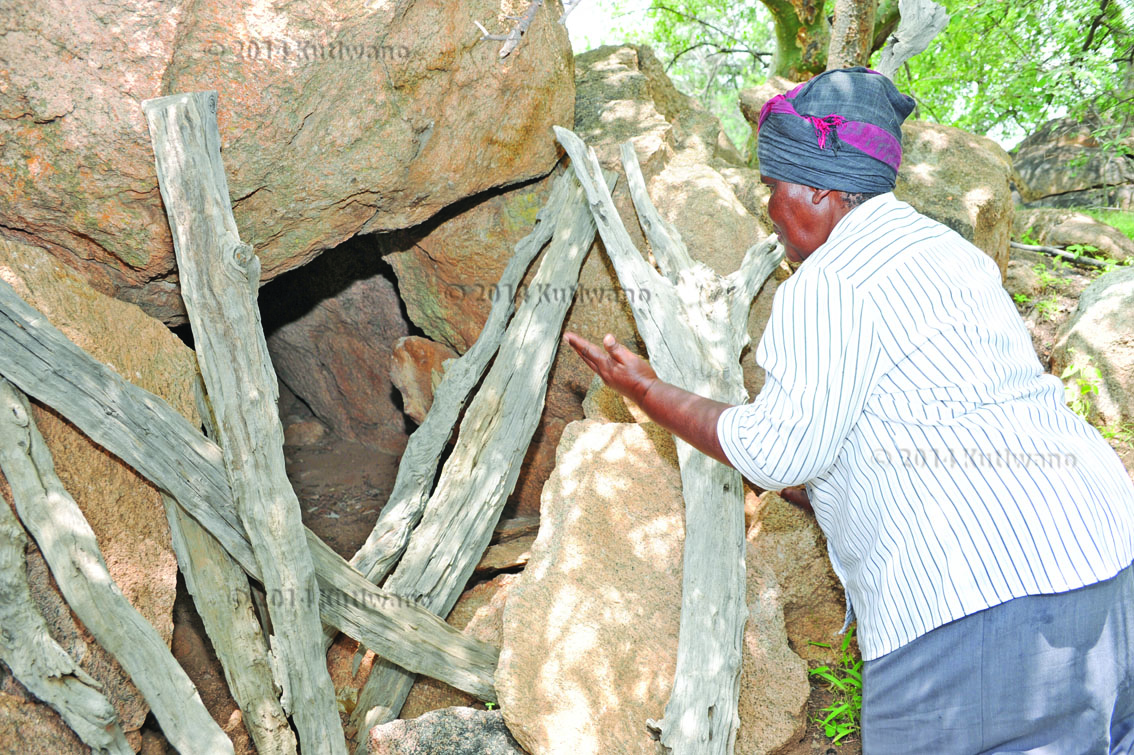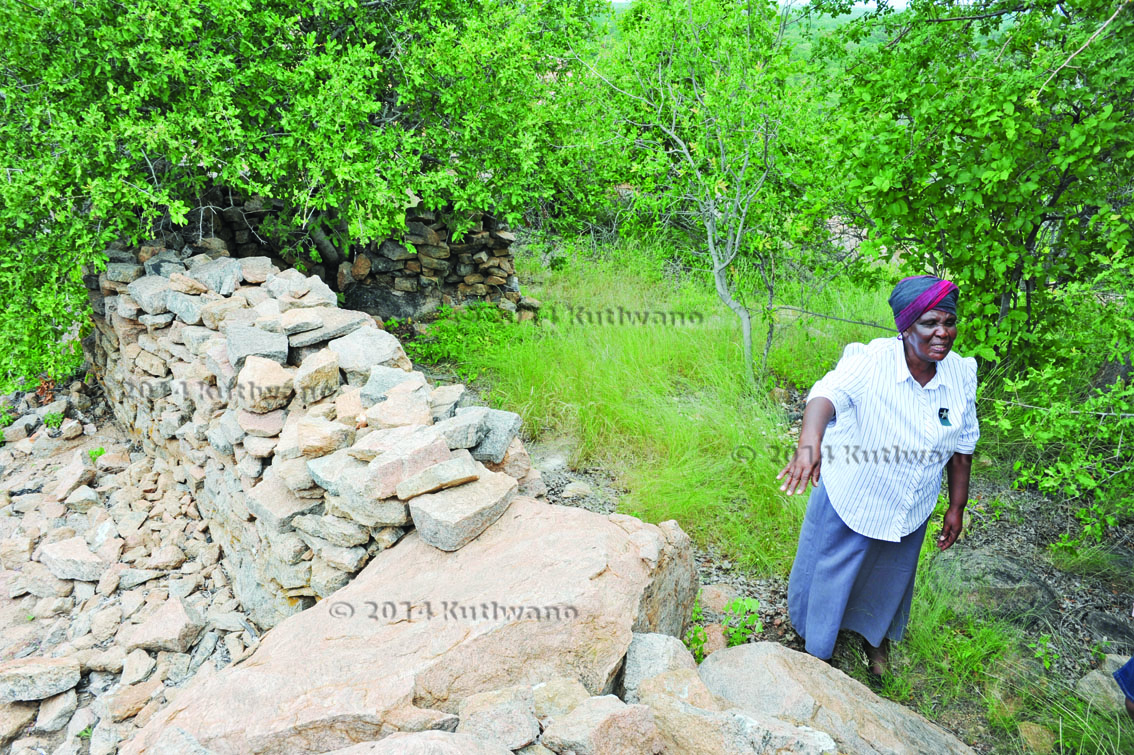Tobane\'s \'Mythic Snake\'
Source : KUTLWANO
Author : Baleseng Batlotleng
Location : SELIBE PHIKWE
Event : Village profile
Tobane's 'mythic snake'
Article: Baleseng Batlotleng
Photo: Phenyo Moalosi
To the south of the majestic Limpopo River, lies about 10 minutes` drive from the Nickel and Copper town of Selebi-Phikwe, the sleepy village of Tobane. The village gets its name from a tranquil tributary that runs across it to the northwest and is visible when one enters the village. It is here that the Batlokwa ba ga Machaka, one of the most formidable groups came to settle during the Mfecane. This group traces its lineage to Batlokwa`s most revered leader Kgosi Sekonyela and his mother Mmanthatisi. They have the Kgama or the red hartebeest as their totem. At the small village`s kgotla, Kgosi Nametsego Nengu-Motlhasedi explains the culture and history of her subjects thus:
“Kgosi Machaka ke ene yo re utlwang fa a tsile a eteletse bo ntatemogolo pele fa batla ba tswa Aferika Borwa nako ya madubedube. Ka mabaka a dintwa le dipheretlhego tse dingwe morafe wa Batlokwa o ne wa phatlhalala ba bangwe ba sala ko Tlokweng gone ko go tlwaelesegileng e le legae la Batlokwa. Ke jaaka o bona le direto tsa rona di sa tshwane. Rona re bina kgama bone ba bina thakadu,” [We understand King Machaka is the one who led our grandparents on their way from South Africa during the Mfecane. Due to the war and other conflicts Batlokwa split. One group remained in Tlokweng which is the village known as Batlokwa capital. That is why even our totems are not the same. Ours is the red wildebeest while theirs is the anteater].
When the tribe arrived in the Bangwato territory then under Kgosi Khama III they settled in Shoshong which was then the Bangwato capital. Due to large groups arriving in this area Kgosi Khama let the Batlokwa relocate to Serorome (Palapye) before they moved to Makome now called Mmadinare.
“Kgosi Khama o ne a tla a ba phatlalatsa gape a bo a laela Kgosi Manakane Mudongo gore a ntshe bo rralekgotla batle go senka lefatshe. Ke gone ka moo ba feletseng bat la go bona legae mo godimo ga thaba go bapa le yone noka ele ya Tobane. Le jaana diphuphu tsa Batlokwa bao ba ntlha go goroga ha di sale foo,” [King Khama dispersed them again and instructed Kgosi Manakane Mudongo to assign senior tribesmen to find land. That is how they finally found a home atop the hill next to Tobane River. The graves of those first Batlokwa inhabitants remain at that place], she adds pointing southwards to the historic Tobane ruins.
Kgosi Mudongo led the Batlokwa to the village of Tobane, succeeding Motswagole Motlhasedi who had gone to stay with his uncle Simon Ratshosa in Serowe after the death of his mother. Motswagole, Kgosi Motlhasedi`s grandfather, grew up in Goo-Ratshosa ward in Serowe.
Some Batlokwa had journeyed and sojourned among the Ndebele in Southern Rhodesia (Now Zimbabwe), but came back when they learnt that their people now had a home.
Like many tribes in Botswana, Batlokwa ba ga Machaka in Tobane uphold the traditional system of mephato and kgotla. There are four main dikgotla in Tobane with Kwa Kgosing being Goora Manakane, followed by Goora Mpuzumoka, Goora Manowe and Goora Marubu in that order.
Tobane is replete with unique cultural, historical and natural heritage sites. The heritage resources are a clear indication that the region contributed immensely in the development of farming societies along the Motloutse River basin. Sites such as Tobane, Sojwane hill ruins and the Mmatau sacred hill are proof that early farming communities had settled here many years before the arrival of Batlokwa.
Documented information at the sites reveals that the area played a role in the socio-economic and political development of the farming communities of the Greta Zimbabwe and Bakalanga state known only as Butua.
Kgosi Motlhasedi says up to now communities living around Tobane use some of these sites as rain making shrines and places of ancestral worship. Some of these sites are venerated by the local people while others are considered abodes of badimo or ancestral spirits.
Sojwane ruins form part of the cultural remains left by different cultural groups that settled here during prehistoric times. Oral traditional history suggests the hills were named after a young herdboy, Sojwane, who was swallowed by a large snake that guarded the ancient hills. Several natural and cultural areas with a strong bearing on the socio-political aspect of Tobane are found here. Deep natural fissures and holes known locally as magopo which are known to be a reliable source of water for both domestic animals and people are found here.
Perhaps the most outstanding feature of these hills is a winding snake-like engraving on a granite boulder which is interpreted as the remains of the mythic snake. Oral history suggests that Sojwane and fellow herdboys disappeared into a hole which used to exist at the lower end of the boulder. Just near this feature is a sacred cave where some people of Tobane, especially the elderly, make offerings of traditional beer to appease ancestors to bring rain.
Our 60-minute tour of the historic Sojwane hills comes to end and the agile Kgosi Motlhasedi who appears to have energy in abundance for someone her age is way ahead of the entire group. Asked about supernatural powers that are often associated with people this part of the country Kgosi rubbishes the claims. Her people, she says, are God fearing. She is herself a confessed Saint Engenas ZCC member, attested also by the church`s badge that she wears with pride like a lapel pin. ENDS
















